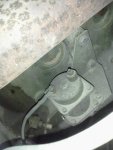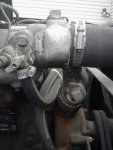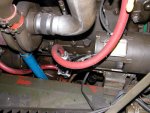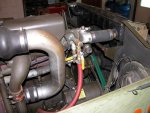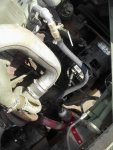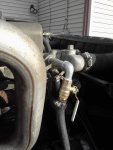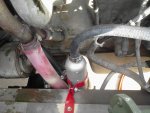jdgreen
Banned
- 52
- 1
- 0
- Location
- IN, land of nuts
Roscoe or any other memebers that have had some knowledge on the cummins 250, know if this is a good spot to plumb in, or not? I also got to re-reading this thread and seen rosco mention that should use the rear block drain. Anyone think instead of hooking up in the middle of the block here as a feed think i should move it back to the back of the block instead and still put my outlet back in at the intake manifold as the thread poster originally did. I just want to make sure it functions properly and get best circulation out of the heater setup.



